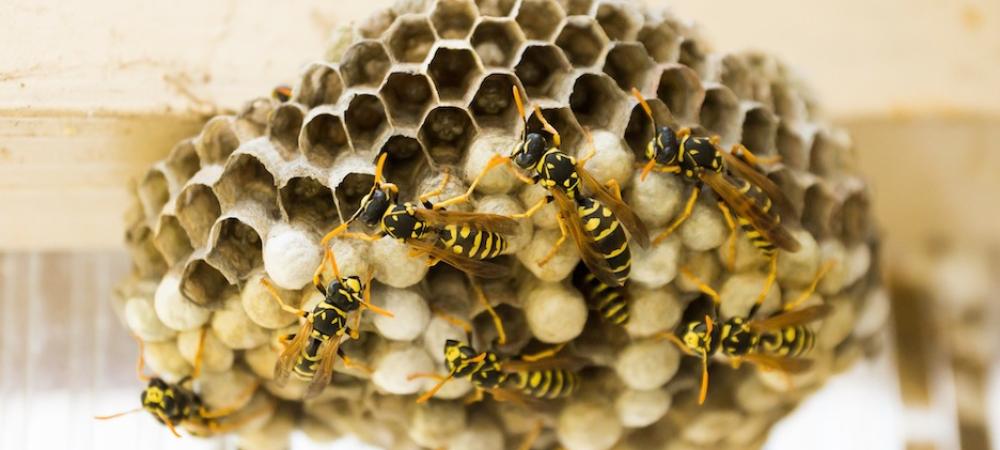How to Keep Wasps from Building Nests

Wasps can turn your peaceful backyard into a stressful space fast. Whether you're concerned about allergic reactions, pets getting stung, or just the general nuisance, preventing nests before they form is your best defense. Here’s everything you need to know to protect your home from these persistent pests.
What Attracts Wasps to Your Home?
Before you can keep wasps away, it’s important to understand why they’re interested in your property in the first place. Wasps are resourceful and seek out environments that provide:
Food Sources
- Sugary substances like soda, fruit juice, fallen fruit from trees, and even flower nectar.
- Protein sources such as pet food, meat scraps, and garbage.
- Insect activity — some wasp species feed on other bugs like caterpillars and spiders, so if you have a garden teeming with insects, you may be unknowingly inviting wasps.
Shelter & Nesting Sites
- Eaves, soffits, and overhangs
- Wall voids, attics, and crawlspaces
- Outdoor furniture, grills, play structures, and sheds
Water Access
- Birdbaths, puddles, clogged gutters, or leaky outdoor faucets offer hydration.
How Can You Keep Wasps from Building Nests?
Preventing wasps from choosing your home starts with making it as unwelcoming as possible. Here are practical steps to deter them:
1. Seal Entry Points
- Use silicone caulk to seal cracks and crevices in your home's exterior, especially near roof lines, windows, vents, and siding.
- Check for gaps around pipes, wires, or utility boxes entering your home.
2. Maintain Landscaping
- Trim back trees and shrubs that touch your house or deck.
- Keep grass cut and remove yard debris where nests could form.
3. Install Screens and Covers
- Use mesh covers over attic vents and chimney tops.
- Ensure windows and doors are properly screened and repaired.
4. Discourage Nest Building
- Hang decoy wasp nests in the spring. Wasps are territorial and often avoid nesting near another colony.
- Spray preventative wasp-repellent on common nesting zones every few weeks during active months (April to September).
Pro Tip: Focus especially on eaves, porch ceilings, and under deck joists — all prime wasp real estate.
What Are Signs Wasps Are Building a Nest?
Catching wasp activity early makes it easier and safer to deal with a potential infestation. Keep an eye out for these warning signs:
- Increased wasp presence around a specific part of your home
- Consistent flight paths—wasps flying in and out of the same area (like a roof edge or vent)
- Visible nest beginnings, which may look like a small gray paper ball or umbrella-shaped structure
- Buzzing sounds from within walls or under eaves
Nests grow quickly, so catching these signs early is crucial.
What Products Help Keep Wasps Away?
Here are some of the most effective wasp deterrents and repellents available to homeowners:
Natural Repellents
- Peppermint oil spray (10 drops of peppermint oil + water + a splash of dish soap in a spray bottle) works well under eaves and in corners.
- Clove, geranium, and lemongrass oil blend is another proven natural repellent.
Commercial Wasp Sprays
- Use foam sprays or long-range jet sprays specifically formulated for wasps.
- Many sprays not only kill but also leave a residue that deters rebuilding.
Wasp Traps
- Baited traps can be hung away from gathering spaces to draw wasps away.
- Change baits regularly — sweet in spring, protein-based in summer.
Decoy Nests
- Easily found online or at hardware stores. Hang one every 20–30 feet around the perimeter of your outdoor spaces.
How Often Should You Check for Nests?
Regular inspections are one of the best ways to stop wasps before they become a major problem.
- Frequency: Inspect your home and yard every 7–10 days during the warm months.
- Where to look: Eaves, rafters, overhangs, gutters, and corners of sheds, garages, and play structures.
Use a flashlight for shaded or attic areas, and don’t forget the underside of outdoor furniture and grills.
What to Do If You Find a Wasp Nest Starting
If you catch a nest early, you may be able to handle it yourself safely:
1. Wait for the Right Time
- Dusk or dawn is best—wasps are least active and inside the nest.
2. Wear Protective Clothing
- Cover all skin, wear gloves, and use goggles or a face shield.
3. Apply a Wasp Spray
- Use a product labeled for wasps. Spray from a safe distance and follow the label instructions.
4. Remove the Nest Carefully
- Once you’re sure the nest is inactive (usually 24–48 hours later), remove and dispose of it to prevent re-nesting.
Warning: Never use water to remove a nest—it won't help and may agitate the wasps.
Should You Hire a Professional for Wasp Removal?
For many homeowners, DIY methods work for small or early-stage nests. However, call a professional if:
- The nest is larger than a softball
- It’s located high up or in a wall void
- You or a household member is allergic to stings
- You’re seeing repeat infestations or multiple nests
At Pest-X, we provide safe, effective wasp nest removal and year-round prevention. Our trained technicians use professional-grade products and protective gear, ensuring your home is treated thoroughly and safely.
Don’t Wait for Wasps to Move In. Contact Pest-X for preventative wasp control today and enjoy your outdoor spaces—sting-free!
